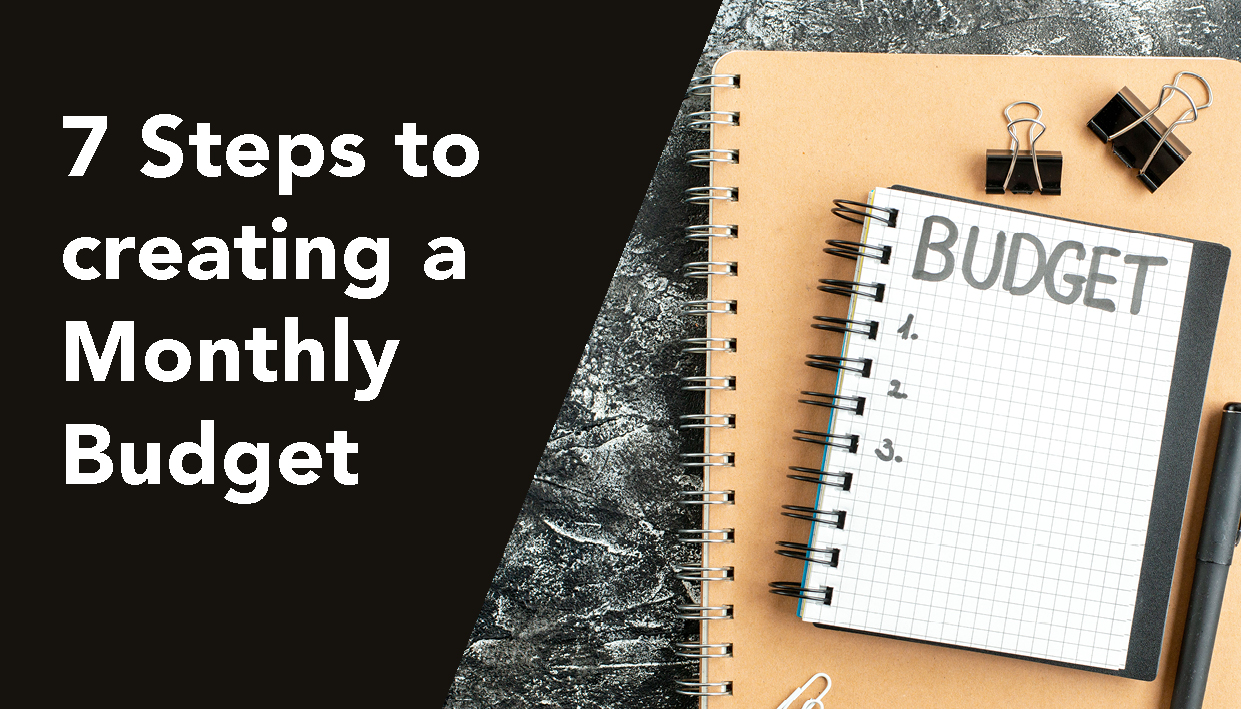When saving for your first home, creating a budget is an important step in managing your finances effectively. It helps you track your income and expenses, prioritize your spending, and work towards your financial goals.Here's a step-by-step guide to help you create a monthly budget:
| STEP 1: |
BANK STATEMENTS:
Print or export your past 3 months of bank statements. |
| |

|
Create your budget using a spreadsheet program like Excel or Google Sheets, or consider using an online budgeting app. For its simplicity and ease-of-use, we recommend the Budgeting Tool from Sorted to help you track your income and expenses, and set spending limits.
|
| STEP 2: |
YOUR INCOME:
To calculate your total monthly income, it is important to gather all sources of regular income that you receive. This includes your salary or wages from your job, dividends from investments, and any other consistent sources of income.
Once you have gathered all this information, add up the amounts to determine your total monthly income. This will give you a clear understanding of how much money you have coming in each month.
By knowing your total monthly income, you can then move forward with creating a budget that aligns with your financial goals. This will help you make informed decisions about how to allocate your money and prioritize your spending.
|
| STEP 3: |
YOUR EXPENSES:
To get a clear understanding of your spending habits, it is essential to jot down all of your regular expenses over the past three months. This will provide you with an accurate picture of where your money is going. However, for expenses that vary from month to month, such as your power bill, work out the average monthly amount.
By examining your bank statements, you can also identify patterns in your spending and gain insights into your financial habits. This process allows you to see how much you typically spend on categories like groceries, transportation, utilities, entertainment, and personal expenses. It also helps you spot any unnecessary or excessive expenditures that can be trimmed down.
Moreover, analyzing your expenses over a three-month period provides a more accurate representation of your financial situation compared to just a single month. It helps account for any irregular or unforeseen expenses that may have occurred during that period.
|
| |
 |
To make it easier to sort and review your expenses, categorize them into different groups, such as:
- Rent
- Food (Groceries and takeaways)
- Transportation
- Utilities
- Entertainment
- Personal expenses
- Debt repayments
- Subscriptions
- Insurances
- Childcare / Education
- Donations
|
By deducting your total monthly expenses from your total monthly income, this is what’s left of your money for everyday spending, for adding to your debt repayments, and for savings. If your outgoings are more than the money coming in, this is 'living beyond your means', and you're on the path to being in debt.
But now you know exactly where you stand, you can make some adjustments to your spending.
| STEP 4: |
SET FINANCIAL GOALS:
Add your financial goals to your budget. These could include paying off debt, a deposit for a house, building an emergency fund, or even saving for a dream vacation. Setting clear financial goals gives you something to work towards and provides motivation to stick to your budget.
- Paying off debt should be a top priority for most people. By including debt repayments in your budget, you can allocate a specific amount each month to gradually reduce your outstanding balances. This will not only improve your financial health, but also free up more money for other goals in the future.
- Saving for a house deposit is another common financial goal. By adding this to your budget, you can determine how much you need to save each month to reach your desired deposit amount. This will help you stay focused and disciplined in your spending, knowing that each dollar saved brings you closer to becoming a homeowner.
- Building an emergency fund is essential for unexpected expenses, such as your car breaking down. This will provide peace of mind and prevent you from relying on debt or depleting other savings when unexpected expenses arise.
Remember, it's important to regularly review and adjust your budget as necessary to stay on track with your financial goals. Life circumstances may change, and new goals may arise, so flexibility is key. By consistently monitoring and adjusting your budget, you can ensure that you are making progress towards achieving your financial objectives and ultimately securing a brighter future.
 |
When allocating your budget, don't forget to include a regular contribution to paying down debt, or to your savings goal. |
|
| STEP 5: |
PRIORITIZE YOUR SPENDING:
Consider whether your expenses align with your financial goals. Review each category of expenses and identify where you can trim or eliminate unnecessary expenditure such as:
- Discretionary expenses like entertainment, dining out, shopping, and hobbies. Consider cutting back on dining out or entertainment expenses by cooking meals at home or finding free or low-cost activities for entertainment. Instead of buying new clothes or gadgets, explore second-hand options or borrow from friends.
- Non-essential services that enhance your lifestyle, but are not necessary, like subscriptions and memberships. Review all your subscriptions and memberships and determine if they are still providing value for your money. Cancel any subscriptions that you no longer use or find alternatives that offer the same benefits at a lower cost.
- Consider changing utility providers, as you may be able to move to a better rate or take advantage of introductory offers. Additionally, consider implementing energy-saving measures in your home, such as using LED light bulbs or adjusting your thermostat, to further reduce your utility bills.
- Find savings in everyday expenses, such as, if buying lunch at work costs $7, but bringing lunch from home costs only $2, then over the course of a year you could save $1,250! Cut back on impulse purchases by creating a shopping list and sticking to it.
|
| STEP 6: |
SET UP INDIVIDUAL BANK ACCOUNTS:
It is a good idea to set up individual bank accounts to help you manage your finances more effectively and stay organized. Proportion the amount required each payday, and set up an automatic payment to the relevant bank account. Here are some suggested categories for your individual bank accounts:
- Essential bills: This account should be dedicated to paying for your essential expenses such as rent, utilities, car registration, and debt repayments. By separating these expenses into a dedicated account, you can ensure that you always have enough funds to cover these necessities and avoid missing any payments.
- Groceries: Setting up a separate bank account for your groceries can help you monitor and control your food spending. By allocating a specific amount to this account each payday, you can avoid overspending and stick to your budget. This will also make it easier to track your food expenses and identify any areas where you can make adjustments to save money.
- Discretionary spending: This account is for your non-essential expenses, such as dining out, entertainment, shopping, and hobbies. By allocating a certain amount of money to this account each payday, you can limit your discretionary spending and prevent it from eating into your essential expenses or savings. This will help you prioritize your financial goals and avoid unnecessary impulse purchases.
- Savings: It is vital to have a separate bank account dedicated to savings. This account should be used to accumulate funds for your financial goals, such as a house deposit or an emergency fund. By setting up automatic transfers from your income to this account, you can ensure that you consistently save a portion of your earnings and make progress towards your savings goals.
|
| STEP 7: |
MONITOR AND ADJUST YOUR BUDGET:
This step is crucial to achieving your financial goals. It allows you to stay on track and make necessary changes as circumstances evolve. By regularly reviewing your budget and tracking your spending, you can ensure that you are effectively managing your finances and making progress towards your goals.
One important aspect of monitoring your budget is to review it on a monthly basis. This gives you a chance to assess your spending patterns and identify any areas where you may be overspending or where you can make adjustments. By taking the time to analyze your budget on a regular basis, you can catch any potential issues early on and take proactive steps to address them.
|
Remember, sticking to a budget requires discipline and a commitment to your financial goals. It may involve making difficult choices and sacrifices, but the long-term benefits are worth it. By staying on top of your budget and making necessary adjustments, you can take control of your finances and work towards achieving your financial objectives.



